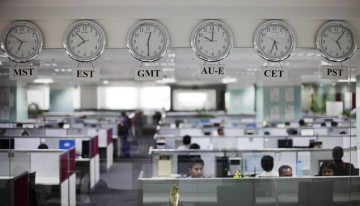 Information Services Group (ISG) said that the annual value of outsourcing deals in the Europe, Middle East and Africa (EMEA) region rose almost four percent in the first quarter of 2020.
Information Services Group (ISG) said that the annual value of outsourcing deals in the Europe, Middle East and Africa (EMEA) region rose almost four percent in the first quarter of 2020.
The analyst outfit said it would have grown at a much higher rate had the impact of COVID-19 not hit the market in March.
The firm uses its EMEA ISG Index which measures commercial outsourcing contracts with annual contract value (ACV) of €5 million (£4 million) or more, shows combined market ACV (including both as-a-service and managed services) in EMEA increased by 3.8 percent year on year, to €4.5 billion (£3.9 billion).
EMEA was on track to deliver 7-9 percent growth, but demand was curtailed by the coronavirus pandemic, which first hit the region in early March. Sequentially, EMEA was down six percent in the first quarter compared with its record fourth-quarter ACV in 2019.
In the first quarter, managed services ACV was up six per cent year on year, to €2.7 billion (£2.3 billion), fuelled by strong demand for information technology outsourcing (ITO), up 23 percent, to €2.4 billion (£2.1 billion). Strength in DACH and Benelux countered a sluggish ACV performance in the Nordics and in the U.K., which continues to grapple with Brexit anxiety. Business process outsourcing (BPO), meanwhile, fell back 51 percent, to €290 million (£253 million), against a robust first quarter last year.
As-a-service ACV, at €1.8 billion (£1.6 billion), established a new quarterly record, albeit on only one percent growth year over year. Infrastructure-as-a-Service (IaaS) rose seven percent, to €1.4 billion (£1.2 billion)—the eighth consecutive quarter it has exceeded €1 billion (£872 million)—while Software-as-a-Service (SaaS) slid 13 percent, to €478 million (£417 million).
ISG EMEA President Steve Hall, said ““Cloud is gaining more relevance every quarter as customers move from on-premises, capex-driven deals to an on-demand operating model. This will only increase as COVID-19 highlights the importance of cloud-based infrastructure.”
Globally, 85 percent of the first quarter’s managed services deals were awarded in January and February. The ISG Index shows a pandemic-related drop-off in activity beginning in early March across Europe – earlier than in the Americas, where this drop-off began toward the end of March.
ISG predicts global ACV for managed services deals will drop 17 percent sequentially in the second quarter, as a result of the pandemic. This will be driven by weakness in key industries such as travel, transportation and hospitality; CPG and retail; and financial services.
The as-a-service market suffered minimal impact from the pandemic in the first quarter. In fact, IaaS experienced a brief surge, as businesses pivoted to a work-from-home environment and saw an increased reliance on e-commerce. IaaS providers may get a boost from firms moving additional workloads to the public cloud.
SaaS providers will be hit by companies shedding costs and user licenses as businesses around the world continue to furlough corporate employees. Firms with multiyear agreements should be better insulated. However, SaaS budgets will be diverted to increased spending on cybersecurity, cloud migration and collaboration tools, the report said.
Hall said: “Firms that took their digital transformation seriously in the past couple of years will likely weather the COVID storm better.They have better visibility into their supply chains. They’ve converted their stores to mini-distribution systems and are using strong B2C and analytics to maintain customer loyalty. Their mobile solutions mitigate the need for humans to seek service via contact centers, and their intelligent automation solutions minimize the number of employees required to transact. Those that didn’t make significant progress on their digital transformations will need to accelerate their digital investments now.
“By the second half of the year, managed services should rebound. Overall, 2020 managed services ACV will be off seven percent. In the as-a-service space, we see ACV being up five per cent sequentially in the second quarter and up 12 percent for the full year.”





